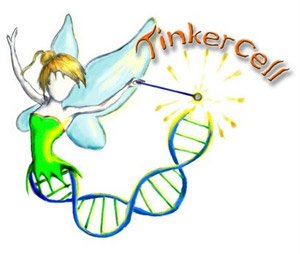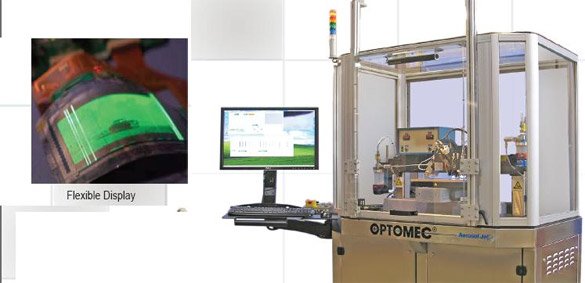Virtualization P3: From Virtual to Reality
(Author's Note: Originally published in H+ Magazine 02/15/2010)
If you read the last section of this three part essay, you will recall I discussed how the VR revolution is likely to occur, and ended up with the statement that VR will likely open the door for the benefits of the technologies of Genetics, Nanotechnology, and Robotics. In this section, I’m going to explain why I think this will occur.
As I pointed out previously, VR is likely to lead to all sorts of weirdness such as people becoming their Avatars in daily life, businesses creating virtual worlds to work in, and a general blurring of the hard and fast lines of Virtual and Real. More than anything else, It’s that blurring effect that more than anything leads me to believe that VR will become a catalyst for GNR.
VR is an ideal test laboratory, one in which we can test out many concepts that are too expensive, or too controversial, to implement in the real world right now. It should be obvious from the recent financial crisis that we need to overhaul our economic models, and even begin looking forward to transitioning to a post scarcity economy, but doing so in the real world is prohibitively difficult. As attractive as the Venus Project’s resource based economy model, or Cory Doctorow’s “Wuffie” model may be, implementing them in the real world is not only hard, but until they are fully tested and found to be practical, they are potentially problematic. Without working prototypes, we have no way to know if they will solve problems or create even worse ones.
But we could easily uncover such problems in a virtual world. A MMO game or virtual world could be far easier to make and test than real life itself is. Nor is it limited to just one single vision. A thousand different worlds could each have their own economic system, and the most successful ones could be refined into completely vetted and tested systems that could then be implemented in reality.
Economic models are not the only thing VR will be used to improve and refine. We already have a machine that can be used to create organs, via a process of “printing”. We also are beginning to see the emergence of genetic CAD systems like Tinkercell, and advances in stemcell use are occurring so rapidly that trying to list even a tiny fraction of links would consume pages. We are in the process of deciphering the programming language of life, and simultaneously using that language to create medical wonders.


So what happens when you begin using VR and combine it with such technologies? The obvious answer is that virtual reality will enable us to create tools that are much easier to use in dealing with small scale devices like micro surgery robots, or any number of other microscopic sciences such as DNA manipulation. A VR version of Tinkercell could allow a scientist to custom build entire organisms from scratch and see them modeled at a scale large enough to easily work with, much like the virtual workshop Tony Stark used in Ironman. That ease of use could just as readily aid the continued research into breaking the genetic code, enabling us to essentially make Lego brick like modules of an enormous variety of molecular machines, complete with their DNA codes, and assemble them in VR.
At the same time, our increasing knowledge of genetics is also going to make things like customized body sculpting not only easier, but probably pretty cheap too. We can print organs now, and use stem cells to cosmetically alter our bodies. They’ve even tested building rabbit penises. Seriously, how long do you think it’s going to be before an organ printer is routinely used to create larger penises? And how long after that do you think it could be used to create a customized elf ear? Or even a prehensile tale for a human being? Once we’ve cracked the DNA code for it, we can program a stem cell to become any other kind of cell. It may not be long before the demand for body customization, raised by VR Avatars, will lead to a the use of organ printers to create “accessories” for our bodies — and we will do it as easily as we accessorize our cars. Frivolous, you say? Absolutely. But don’t ever underestimate how much people will invest in frivolity to get what they want.
In a related field, VR is also likely to push research into BCI in a massive way. As recently noted on h+, we’ve now got transistors that act more like synapses than digital devices. It is possible that such synaptic mimics could make it far easier to link the human nervous system to a typical digital circuit; or could create a means of making entirely new kinds of computers which could enable two way communication between the brain and your VR environment. It should be obvious that the basic VR device I’ve outlined is a far cry from the typical Matrix-like expectations of VR, but it’s only the beginning. As computers continue to advance, and we find new ways of using electronics and our biology, a Matrix level VR system is simply a matter of time, research, and demand. Even if it proves impossible to create a full 2-way communication system, we’ll find other ways to make our VR systems as hyperreal as reality itself.
Which more or less brings us to the next revolution — nanotechnology. I won’t go into all the pros and cons about nanotech, but I will point out that K. Eric Drexler himself is saying that we have the foundational tools needed to bring his vision of nanotech into it’s infancy. It’s happening, and we still have to figure out how to cope with it. (The blog post from Drexler originally linked is no longer active, sorry)
VR offers the same laboratory for nanotech that it does for other sciences. In fact, in its roughest stages, it’s already providing. The ability to create items in Second Life is really a virtual version of Drexler’s Nanofactory. To be sure, it’s a rough equivalent, but close enough to give us an idea of what kinds of changes to our everyday reality true nanotech could bring. From the most fantastical of structures, to the most fantastical of creatures, Second Life is built on the object creation system. Be it a home, a sword, or a pair of wings, if you can imagine it, you can make it. This is the same promise that Nanotech offers, but available now. It gives us a taste of what universal assemblers could do and lets us play with it hands on.
We’re already in the rough stages of pre-nanotech universal assemblers with such advances as the RepRap self replicating 3d printer; our increasingly versatile ability to print electronics like flexible touch screen displays; and the organ printer mentioned above. With the continued growth of open source designs, and the likely integration of object creation software like that used in Second Life and other 3D environments, creating what we imagine may become as easy in reality as it is in VR. Even as nanotech is being developed through multiple pathways, we may already have not only explored many of its benefits in virtual space, but figured out how to cope with its dangers as well.

Which brings us to the last of Kurzweil’s revolutions — robotics. We already deal with robots in virtual space in the form of animated NPC’s and various other “monsters” in video games. With the rapid advances in robotics, from such complex devices as the Actroid to the surprisingly advanced toy Robosapien, to the new “sexbot” Roxxxy, it seems likely that once VR “NPC’s” merge into the world of robotics, we’re going to see some major advances in the use of robots in our day-to-day life.

While Rosie the robot maid may be some years off , robots in limited capacities may become quite commonplace for many menial tasks such as running the register at a fast food joint or supermarket — doing precisely what NPC’s do in the virtual world today. We will just as likely see the use of robots for VR surrogates, much like the recent movie, though far more limited. Take Roxxxy for an example, and add in the Actroid animatronics, and it seems that it could be a fairly simple matter to program such a robot to act as the physical “avatar” for a virtual person, enabling them to remotely control the bot from anywhere in the world. Even in the early stages, such a "telepresent" sexbot would revolutionize the entire concept of long distance relationships, further blurring the line between virtual and real. While it would start off with something as simple as preprogrammed routines similar to the sex animations common in Second Life, as we continue to advance in our ability to interact with our virtual selves and such telepresent “surrogates” to enable us to “be there” physically, it seems likely that those advances will be usable outside the bedroom as well, enabling us to create ever more lifelike and sophisticated automatons.
And as we learn to make robots act more and more human, it will also enable us to make them capable of more and more complex tasks, gradually working up from salesbots and sexbots to autochefs capable of not only cooking our food, but cleaning up the kitchen. And it will start as we make better and better virtual “people” to handle all those boring and menial jobs in VR.
And that is why I say VR is a gateway to the other revolutions. We continually hear about the wonders of such advanced technologies, but we are as afraid of them as we are desirous. VR, more than anything else, will let us play with our dreams, without worrying about our nightmares. We will make a virtual wonderland, and from that wonderland, we will bring the best and most beneficial to our everyday world. No matter how crazy, no matter how strange it may seem to us now, our future will be beyond our wildest imaginations. VR will give us the tools we need to not only make that future conceivable. It will give us the means to face our fears and overcome them. Unlike the Krell from the movie Forbidden Planet, we will be able to face our Demons of the Id before they will ever have the power to do us harm, and in so doing, it will let us chart a safer course to the Singularity.
Tempting thought, no? Well, what did you expect? I did warn you I was a Succubus…
Seduce you later!
